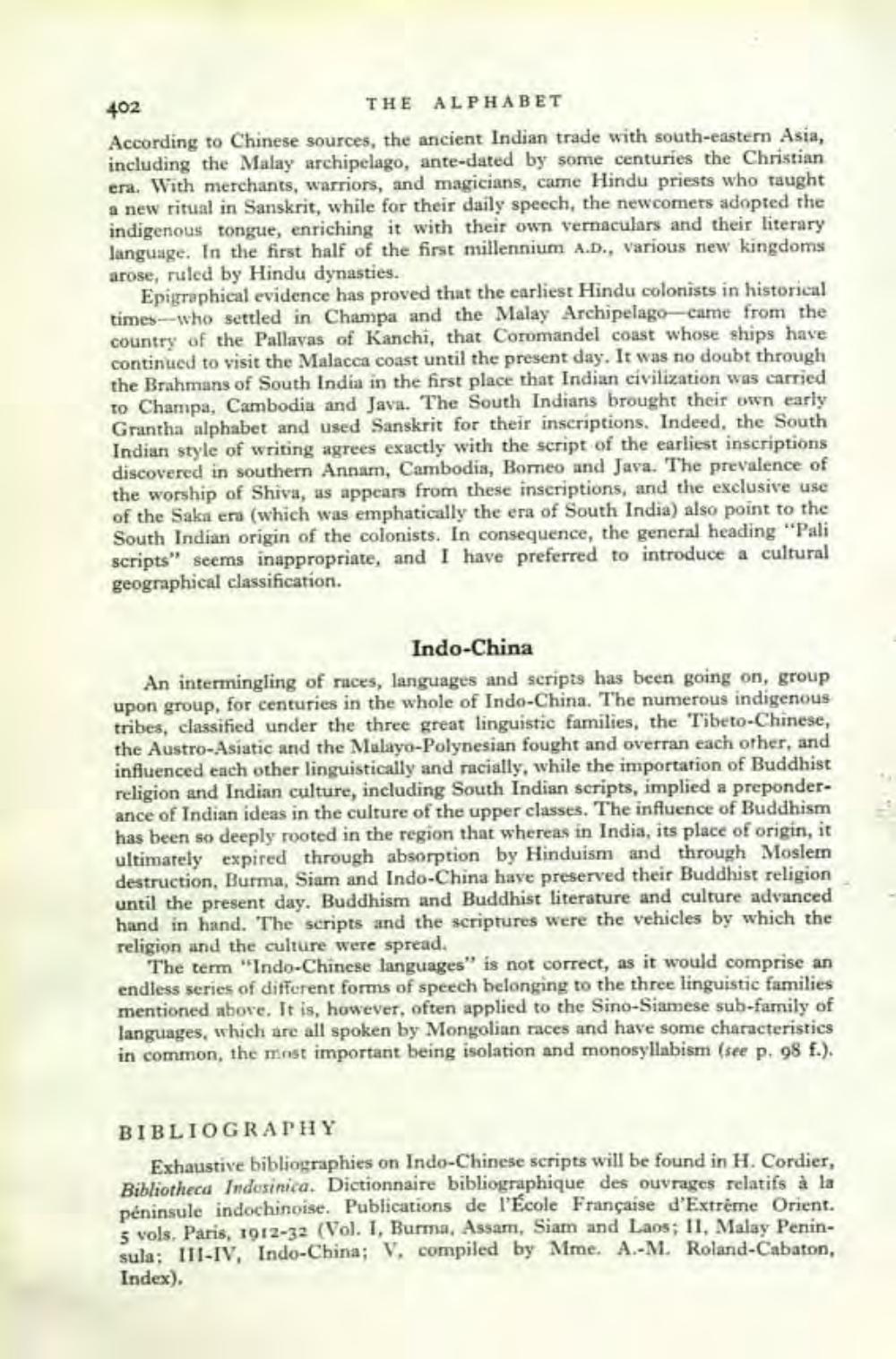________________
402
THE ALPHABET
According to Chinese sources, the ancient Indian trade with south-eastern Asia, including the Malay archipelago, ante-dated by some centuries the Christian era. With merchants, warriors, and magicians, came Hindu priests who taught a new ritual in Sanskrit, while for their daily speech, the newcomers adopted the indigenous tongue, enriching it with their own vernaculars and their literary language. In the first half of the first millennium A.D., various new kingdoms arose, ruled by Hindu dynasties.
Epigraphical evidence has proved that the earliest Hindu colonists in historical times-who settled in Champa and the Malay Archipelago came from the country of the Pallavas of Kanchi, that Coromandel coast whose ships have continued to visit the Malacca coast until the present day. It was no doubt through the Brahmans of South India in the first place that Indian civilization was carried to Champa, Cambodia and Java. The South Indians brought their own early Grantha alphabet and used Sanskrit for their inscriptions. Indeed, the South Indian style of writing agrees exactly with the script of the earliest inscriptions discovered in southern Annam, Cambodia, Borneo and Java. The prevalence of the worship of Shiva, as appears from these inscriptions, and the exclusive use of the Saka era (which was emphatically the era of South India) also point to the South Indian origin of the colonists. In consequence, the general heading "Pali scripts" seems inappropriate, and I have preferred to introduce a cultural geographical classification.
Indo-China
An intermingling of races, languages and scripts has been going on, group upon group, for centuries in the whole of Indo-China. The numerous indigenous tribes, classified under the three great linguistic families, the Tibeto-Chinese, the Austro-Asiatic and the Malayo-Polynesian fought and overran each other, and influenced each other linguistically and racially, while the importation of Buddhist religion and Indian culture, including South Indian scripts, implied a preponderance of Indian ideas in the culture of the upper classes. The influence of Buddhism has been so deeply rooted in the region that whereas in India, its place of origin, it ultimately expired through absorption by Hinduism and through Moslem destruction, Burma, Siam and Indo-China have preserved their Buddhist religion until the present day. Buddhism and Buddhist literature and culture advanced hand in hand. The scripts and the scriptures were the vehicles by which the religion and the culture were spread.
The term "Indo-Chinese languages" is not correct, as it would comprise an endless series of different forms of speech belonging to the three linguistic families mentioned above. It is, however, often applied to the Sino-Siamese sub-family of languages, which are all spoken by Mongolian races and have some characteristics in common, the most important being isolation and monosyllabism (see p. 98 f.).
BIBLIOGRAPHY
Exhaustive bibliographies on Indo-Chinese scripts will be found in H. Cordier, Bibliotheca Indesinica. Dictionnaire bibliographique des ouvrages relatifs à la péninsule indochinoise. Publications de l'Ecole Française d'Extrême Orient. 5 vols. Paris, 1912-32 (Vol. I, Burma, Assam, Siam and Laos; II, Malay Peninsula; III-IV, Indo-China; V, compiled by Mme. A.-M. Roland-Cabaton, Index).




